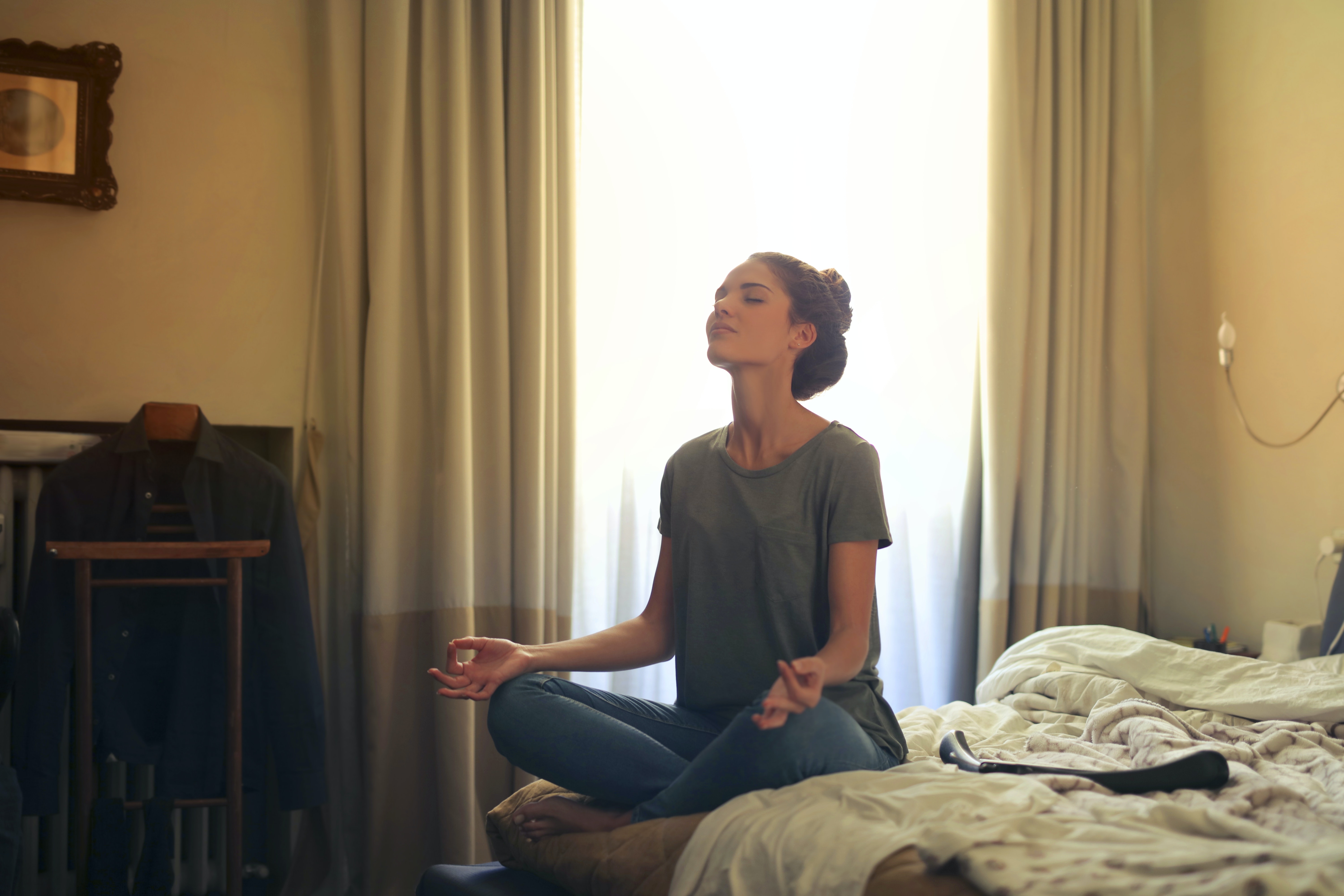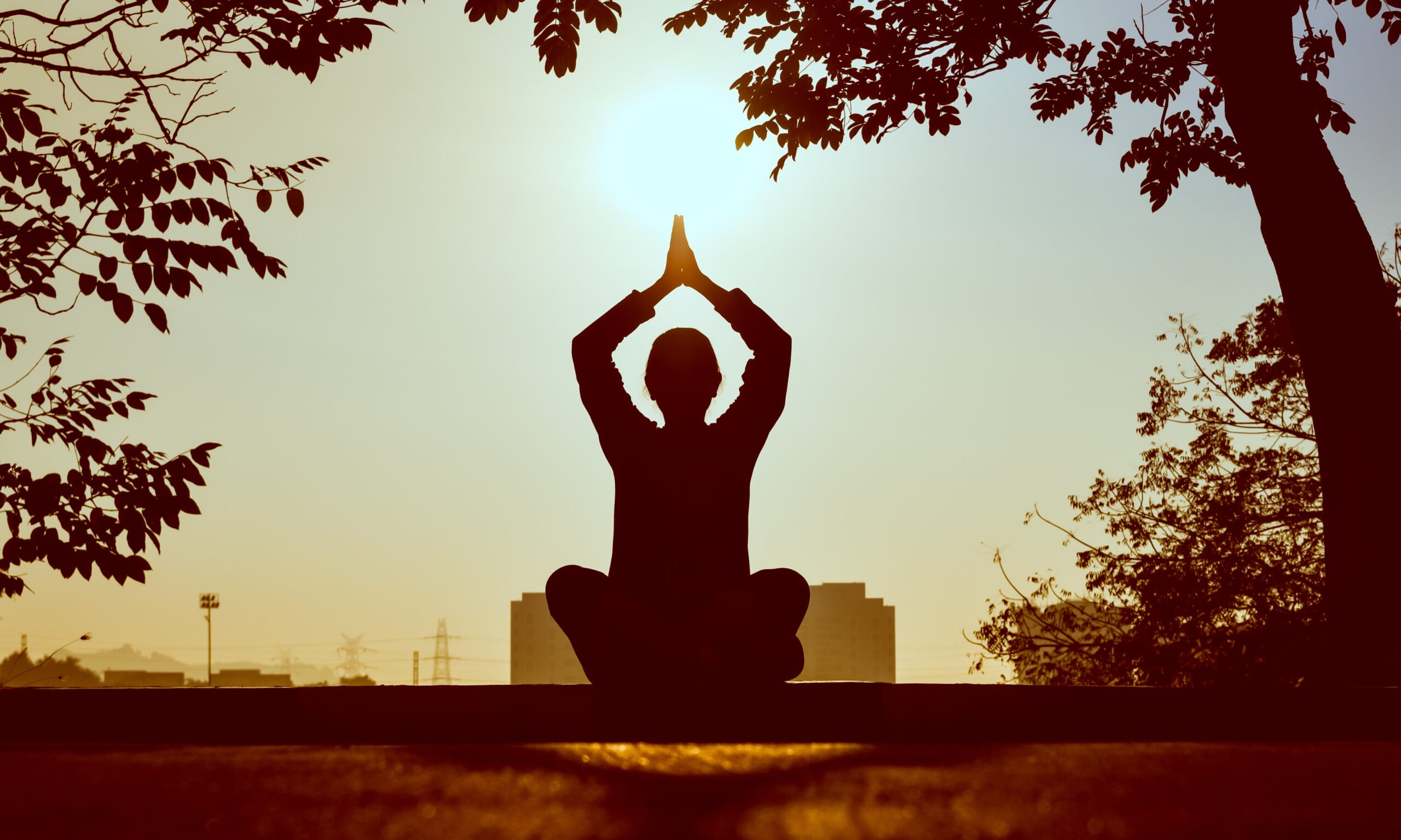A set of methods used to promote increased awareness and concentrated attention can be referred to as meditation. A wide range of advantages for psychological well-being has been linked to the conscious experience practice of meditation. In this article, you will find out if is it normal to cry during meditation or not.
A set of methods used to promote increased awareness and concentrated attention can be referred to as meditation. A wide range of advantages for psychological well-being has been linked to the conscious experience practice of meditation.
Meditation Is The Key To Become A Better Person
While meditation is not a miracle, it can provide your life the much-needed breathing room. Sometimes, that is all we require to make better decisions for our families, communities, and ourselves. The most essential supplies you can include in your meditation practice are a little bit of tolerance, some self-kindness, and a pleasant spot to meditate.
The sensation of serenity, tranquility, and balance that meditation can provide you can help both your mental health and general health. You can use it to relax and manage stress by focusing your attention on something tranquil. By meditating, you can develop your ability to retain inner calm and concentrate.
And once your meditation session is over, these advantages continue to exist. You can go about your day with more tranquility if you practice meditation. Additionally, meditation may aid in the management of certain medical disorders’ symptoms.
Once the flow has been started, you could discover that you continue to feel emotions and occasionally even cry as you go about your day. You can heal your physical body, mind, and spirit by doing this. Be very kind to yourself and remember that by going through this process, you are truly detoxing.
Types of Meditation

Discover more about the types of meditation and get tips on how to do it more effectively.
Focused Meditation
Any of the five senses can be used to concentrate during focused meditation.
You may, for instance, concentrate on your breathing, or you could bring in outside factors to assist you to concentrate.
Examples comprise:
- Numbering the malas
- Counting your breaths while listening to a gong and gazing at a candle flame
- Moon watching
Although this exercise may seem straightforward in theory, it might initially be challenging for beginners to maintain their attention for more than a few minutes.
If your thoughts do stray, just return to the exercise and refocus. This exercise is perfect for anyone who wishes to improve their focus and attention, as the name implies.
Mindfulness Meditation
The most well-known and extensively studied type of meditation practiced in the West is mindfulness meditation, which has its roots in Buddhist teachings.
During a mindfulness meditation session, you focus on your thoughts as they come and go. You don’t condemn or identify with the thoughts. You simply keep an eye out and note any patterns.
This exercise combines awareness and concentration. While observing any physiological sensations, thoughts, or feelings, you might find it useful to concentrate on anything or your breathing.
Due to its simplicity, this style of meditation is suitable for those without an instructor to act as their guide.
Transcendental Meditation
Numerous studies in the scientific community have looked into the practice of transcendental meditation (TM).
Maharishi Mahesh Yogi established TM, which stands for a particular practice intended to quiet the mind and elicit a feeling of serenity and harmony. It is best taught by a trained TM practitioner and involves the use of mantras.
This technique is for anyone who desires a simple way to experience the depth that meditation has to offer.
Mantra Meditation
Numerous teachings, including those of the Hindu and Buddhist traditions, heavily emphasize mantra meditation. To help you focus during this sort of meditation, play a rhythmic sound. It can be a word, phrase, or sound, with “om” being one of the most popular.
You can say your mantra softly or out loud. You’ll become more aware of your surroundings and alert after repeating the phrase for some time. You can achieve deeper states of awareness as a result.
Because it’s simpler to concentrate on a word than on your breath, some individuals find mantra meditation to be enjoyable. Some people appreciate how the sound makes their bodies vibrate.
For those who prefer repetition and dislike silence, this is a useful exercise.
Spiritual Meditation
Nearly all religions and spiritual traditions practice spiritual meditation.
The various forms of spiritual meditation are as varied as the various spiritual traditions found around the world. There are numerous methods of meditation that could be categorized as spiritual meditation in this article.
Spiritual meditation concentrates on strengthening one’s connection with a higher power and comprehension of spiritual/religious meaning. Examples are:
- Christian meditation in prayer
- Dhikr Sufi (remembrance of God)
- kabbalistic customs of the Jews
Spiritual reflection is possible both at home and in a place of worship. For people who are interested in spiritual development and a closer relationship with a higher power or spiritual force, this practice is helpful.
Visualization Meditation
By imagining uplifting situations, images, or figures, visualization meditation aims to improve sensations of relaxation, tranquility, and calmness.
This exercise requires vividly picturing a scene and including as many details as you can by using all five senses. It might also entail thinking of a beloved or respected person with the goal of emulating their traits.
Another type of vision meditation involves picturing yourself achieving particular objectives in an effort to sharpen concentration and motivate yourself.
A lot of people practice visualization meditation to elevate their mood, lower their stress levels, and encourage inner tranquility.
Movement Meditation
Although most people associate movement meditation with yoga, this technique can also involve:
Walking, gardening, qi gong, tai chi, and other moderate exercises
This is a type of active meditation where the movement helps you connect more deeply to your body and the moment.
Movement People who find calm in action and wish to increase bodily awareness can consider meditation.
Progressive Relaxation
Progressive relaxation also referred to as body scan meditation is a technique used to ease physical tension and encourage relaxation.
This type of meditation frequently entails gradually contracting and relaxing each muscle group in turn throughout the body.
It can also suggest that you visualize a soft wave gently sweeping through your body to help relax any tension.
Before going to bed, people frequently practice this type of meditation to unwind and relieve stress.
Meditation Helps In Illness
If you have a medical problem, especially one that could be made worse by stress, meditation may also be helpful.
Although a growing body of scientific evidence points to the health benefits of meditation, some experts think it is still too early to draw any firm judgments about such benefits.
In light of this, some study indicates that meditation may help individuals in reducing the symptoms of conditions like:
- Anxiety
- Asthma
- Cancer
- enduring pain
- Depression
- Heart condition
- elevated blood pressure
- Rheumatoid bowel syndrome
- issues with sleep
- headaches with tension
If you suffer from any of these problems or other health issues, be sure to discuss the benefits and drawbacks of meditation with your doctor. In certain extremely rare situations, meditation may make symptoms related to particular mental health issues worse.
Traditional medical care cannot be replaced by meditation. But it might be a good addition to your present course of treatment.
How To Meditate

Here are some techniques for independent meditation that you can use whenever you like:
Draw a deep breath
Due to the fact that breathing is a natural process, this technique is suitable for beginners.
Concentrate solely on your breathing. As you breathe in and out through your nostrils, pay close attention to how you’re feeling and hearing. Slowly and deeply inhale. When your thoughts stray, gently bring them back to your breathing.
Do a body scan
When utilizing this method, pay close attention to various body sections. Recognize the many sensations you are experiencing in your body, such as pain, tension, warmth, or relaxation.
Exercise your breathing while scanning your body, and visualize breathing heat or relaxation into and out of various bodily areas.
Say a mantra aloud
You can come up with your own mantra, whether it is spiritual or not. Examples of religious chants include the Holy Quran verses in Islamic tradition, the holy name of God in Judaism, and the om mantra in Hinduism, Buddhism, and other religions.
Take a stroll while you’re thinking
A productive and beneficial technique to unwind is to walk and meditate. Anywhere you’re strolling, such as a serene forest, a city sidewalk, or a mall, you can apply this strategy.
When employing this technique, slow down your walking speed so that you may concentrate on each leg or foot action. Don’t concentrate on one particular location. As you lift each foot, extend your leg forward, and plant your foot on the ground, focus on your legs and feet while mentally repeating action words like “raising,” “moving,” and “putting.” Concentrate on the sights, sounds, and smells in the area.
Different Sensations That People Observe During Meditation
In spite of the fact that there are many sensations you can experience while meditating, only four things can actually occur:
- You are conscious of your mantra or the meditation’s main objective.
- You have feelings or thoughts.
- You doze off.
- You enter the “gap,” which is the quiet space between thoughts.
You won’t actually be aware that you’ve entered the space between thoughts until you’ve drifted back out of it. In the gap, there are no ideas; only pure consciousness or peaceful awareness.
Yawning During Meditation
Lack of oxygen can also make you yawn while you’re meditating. To ensure that you are sitting with a straight spine, your chest should be open, and your shoulders should be back. To ensure that you are taking in a full breath, you should be breathing diaphragmatically. You’ll yawn if your breathing is affected.
Screaming During Meditation
It appears that sobbing during meditation is a common thing. Although many people find that meditation reduces their stress, it can occasionally also cause unpleasant emotions, such as shouting or screaming. But this isn’t always negative. In the end, “letting it all out” can be therapeutic.
Crying During Transcendental Meditation
Understand that crying is normal. It allows you to let go of your negative energy and lowers stress hormones like cortisol. While meditating, crying is a sign that the meditation is effective. Crying is a normal, powerful way to express emotions, and doing so is beneficial.
Final Thoughts
Without a doubt, meditation is a fantastic exercise for determining your life’s purpose. You must purge all of your negative thoughts if you want to succeed in life and start working on things that will have a good influence on your life. All of this will be made feasible once you begin to meditate. We guarantee that if you try this practice at least once in your life, you will notice a difference.
FAQs
What does it mean to cry while meditating?
It’s a sign that you have unresolved sadness and loss inside of you, ready to be released if you cry while meditation. The time and chance for that release might be offered via meditation.
Why do I get so emotional when I meditate?
In fact, it’s a typical method of healing. It allows you to let go of your negative energy and lowers stress hormones like cortisol. While meditating, crying is a sign that the meditation is effective. Crying is a normal, powerful way to express emotions, and doing so is beneficial.
Is crying during mindfulness normal?
It appears that sobbing during meditation is a very regular occurrence. Although many people find that meditation reduces their stress, it can occasionally cause uncomfortable emotions, such as crying. But this isn’t always a drawback. In the end, “letting it all out” can be therapeutic.
What should you not do during meditation?
The secret to meditation is to become aware of your ideas and decide, on purpose, not to act on them.
- Don’t let your thoughts lead you astray. Imagine yourself enjoying a song.
- Do not stand up before the entire meditation period has passed.
- Mantra meditation is simple.
- Practice singing a song.
What happens to your body during Meditation?
The relaxation reaction that results from meditation helps lower blood pressure, and enhance heart rate, respiration, and brain waves while also helping with metabolic reduction. Muscle tension and tightness are released as the body receives a subtle signal to relax. There is scientific proof that meditation is effective.
Is it normal to yawn during meditation?
Lack of oxygen can also make you yawn while you’re meditating.
Is it normal to feel lightheaded after meditation?
The body gets a chance to “unwind” and release tension during meditation if you become really profoundly relaxed. The body’s subtle energies may change as it strives for greater balance. As this is happening, you could experience a variety of sensations, such as spinning or vertigo.

